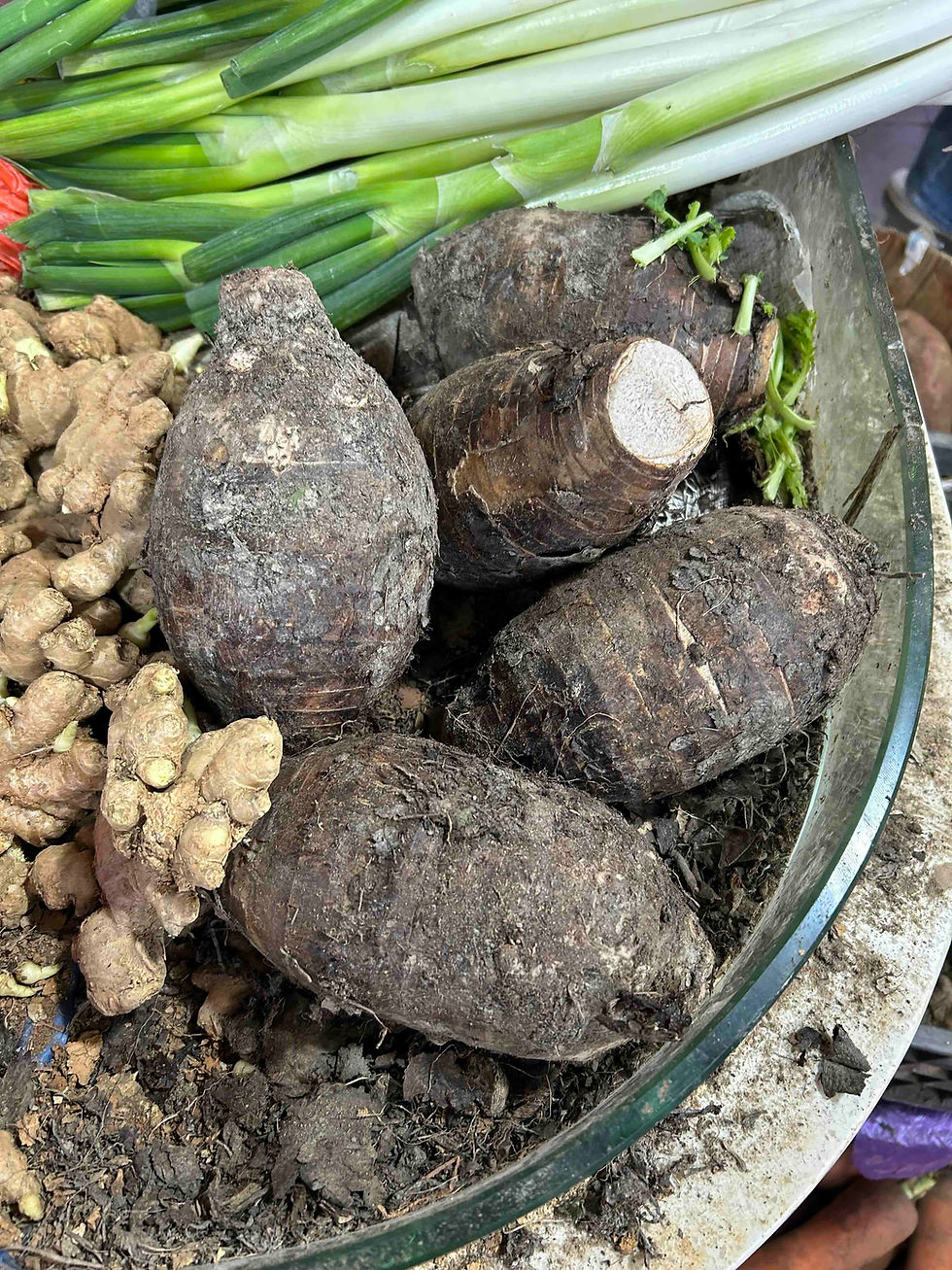On how to use quinces
- Rachelle

- Oct 9, 2023
- 2 min read
江南人不識榅桲,世南侍親官蜀,至梁、益間,方識之。大者如梨,味甜而香,用刀切,則味損而黑。凡食時,先以巾拭去毛,以巾包,於柱上擊碎,其味甚佳。蜀人以榅桲切去頂,剜去心,納檀香、沈香末,并麝少許。覆所切之頂,線縛蒸爛。取出俟冷,研如泥。入腦子少許,和勻,作小餅燒之,香味不減龍涎。
The people of Jiangnan do not know of quinces. Taking office with my family in Shu, I came to learn about this fruit somewhere around Liang and Yi.[1] The big ones like pears taste sweet and smell great. Cutting with a knife will destroy their flavour and make them turn black. To eat a quince, first wipe off the fuzz on its skin with a piece of cloth, wrap the fruit in the cloth and smash it against a pillar; the taste will be wonderful. The people of Shu may cut off the top of a quince, core it, and fill it with sandalwood powder, agarwood powder, and a pinch of musk. [They] cap it with the original top, bind it well with a thread and steam it until it is very soft. The quince is then taken out [of the steamer] to cool down and ground into a mash. A bit of camphor wood is blended [into the mash], and [the mixture] is made into small incense bricks. The fragrance is just as impressive as ambergris.
* From Zhang Shinan 張世南 (fl. 13th century), Youhuan jiwen 游宦紀聞 (Zhibuzuzhai congshu 知不足齋叢書 edition) 2.1a-b: https://ctext.org/library.pl?if=en&file=87009&page=25.
[1] Shu roughly corresponds to modern Sichuan. “Somewhere around Liang and Yi” would be an area along the current border between Sichuan province and Shaanxi province.


Finally, a more common way of using quinces - quince jelly
Copyright Declaration*:
The texts and images used on the website of Rachelle's Lab are either from the public domain (e.g. Wikipedia), databases with open data licenses (e.g. Shuhua diancang ziliao jiansuo xitong 書畫典藏資料檢索系統, National Palace Museum, Taipei), online libraries that permit reasonable use (e.g. ctext.org), or original work created for this website.
Although fair use of the website for private non-profit purposes is permitted, please note that the website of Rachelle's Lab and its content (including but not limited to translations, blog posts, images, videos, etc.) are protected under international copyright law. If you want to republish, distribute, or make derivative work based on the website content, please contact me, the copyright owner, to get written permission first and make sure to link to the corresponding page when you use it.
版權聲明:
本站所使用的圖片,皆出自公有領域(如維基)、開放數據庫(如臺北故宮博物院書畫典藏資料檢索系統)、允許合理引用的在線圖書館(如中國哲學電子化計劃)及本人創作。本站允許對網站內容進行個人的、非營利性質的合理使用。但請注意,本站及其內容(包括但不限於翻譯、博文、圖像、視頻等)受國際版權法保護。如需基於博客內容進行出版、傳播、製作衍生作品等,請務必先徵求作者(本人)書面許可,并在使用時附上本站鏈接,註明出處。
*Read more about copyright and permission here.




Comments